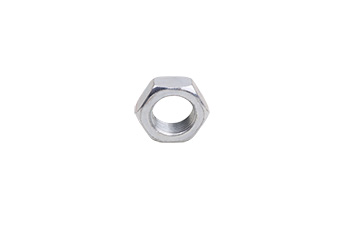Fasteners are a type of mechanical parts that are used […]
Fasteners are a type of mechanical parts that are used for fastening connections and are very popular. This article shares the types and uses of some commonly used fasteners, as well as common failure modes and corresponding reasons.
1. Types and uses of threaded fasteners
Common threaded fasteners are bolts, studs, nuts and washers. (For more and more tight fasteners, please click "Illustrated Bolts, Studs, Pins, Rivets and other 12 Types of Fasteners, and Selection Suggestions")
Bolts, studs and screws are all threaded on the cylindrical surface to connect other parts.
Bolts are usually used when the welded parts are drilled into through holes.
The stud is used when one of the connected parts is relatively thin or is never allowed to be drilled into a through hole.
Screws are used in connections that are never disassembled frequently and are subjected to relatively large forces. According to their use, they can be divided into connection screws and set screws.
Nuts are connected with bolts, studs, etc.
The washer is usually placed on the nut to avoid damage to the connected parts when the nut is tightened. The spring washer prevents the nut from softening and falling off.

2. Failure form and cause analysis of threaded fasteners
1) Assembly twisting and pulling fracture
Twisting and pulling fracture is characterized by significant necking and elongation at the fracture site. The common reason is that the friction coefficient of the coupling surface is too small; the torque applied during tightening or pre-tightening is too small, the sleeve and thread are absolutely different from the axis when the torque is applied, and the speed is so slow when the torque is applied, and the performance strength of the part itself is sufficiently tight. The verticality of the solid surface and the thread center line is out of tolerance.
2) The thread is broken by shearing force
The fracture part twisted by shearing force usually has a spiral shape without significant necking. The common reason that causes the thread to be twisted by shearing force is that the thread is jammed during the tightening process, such as: thread deformation, interconnected teeth The type is never the same, and the thread has a welding slag lamp; the section where the bolt is screwed is resisted, such as the precise groove depth of the nut as a blind hole.
3) The stress dispersing part breaks after use
The fracture of the stress dispersing part after use is usually manifested in the bolt head and the excessive right-angle part of the head and the threaded rod. The main reason is that the fillet of the head and the threaded rod is too small; the plasticity of the head when the bolt is cold-headed There is a flaw in the streamline. The verticality of the connecting surface and the bolt is out of tolerance.
4) Fatigue fracture
The main fracture in the process of using after the bolt connection is a painful fracture. Common reasons include: lack of pre-tightening force; excessive clamping force attenuation; bolt size and performance are absolutely unqualified; mutual cooperation between parts, assembly environment, and use The working conditions must not meet the design requirements.
5) Delayed break
Delayed fracture is commonly caused by hydrogen embrittlement. Hydrogen embrittlement is the trace amount of hydrogen that enters the outside of the steel during the production process (such as electroplating, welding), which causes embrittlement and cracking of the material under the action of external stress or applied stress. Common fasteners that are prone to hydrogen embrittlement include: self-tapping screws, elastic washers, and grade-exceeded bolts that have undergone electroplating surface treatment.